A gallery in Manila has employed in several instances the term "post-local" to emphasize its investments in participating in or organizing non-Philippine events in Asia, Europe or the US. A lifetime ago these events would have been called "international" events in their sense of importance, but that smells too much of cultural diplomacy. The word "global" is too risqué even now, and no self-respecting writer will use this overloaded, fast-food staple to be used in catalogues and brochures and other exhibition paraphernalia. Thus the need for some pizzaz in the marquee-blinking lights of post-local. You can't risk using "post-Philippine" though, as that will rile up a lot of sentiments. Better to be diplomatic, although ambiguous, to learn to curse between clenched teeth. But then again, such neologisms are necessary, to appeal to something the activists of the previous generation are so apt to rile at. It is neocolonialism, or at least a symptom of it. Enter marketing intervention: you can re-present anything, even vile and objectionable, with brand-new wrapping. It shines like tinsel on Christmas Day though it stinks like Araw ng Patay.
The way I read terms like "post-local" make me realize how much marketing lingo is employed now in current-day art practice. Even I dread to use "contemporary" (note I used current) because that is again also, loaded and contentious, not to mention problematic. Gone are the old days when art writers were purists, academics who wrote for their own ken and hot for some honorarium. The art market in Asia has employed the services of very good pen-pushers, neologists, critics and curators to a certain degree they do shape the way art is bought, sold and trafficked. "Post-local" is a euphemistic way to say that this art "doesn't really give a f&$k to the question of Philippine identity anymore." In certain ways I agree to this and any other form of interjection.
The question of Philippine identity in art practice has been asked by Leo Benesa as a provocation to artists living in his time. And that was post-war, when we were suddenly inundated by Filipino grantees who studied Modern Art, mostly in the US. Certainly, after decades of vernacularizing Cubism, Surrealism, Minimalism, Abstract Expressionism and then striking forward with our own Social Realism, so vogue in the 70's to the 90's, we can see where Benesa's provocation has been proven, not by argument, but by praxis. To be certain, people who talk of post-local are also provocateurs who can very well say "O ano na pagkatapos ng Philippine identity?" (What's next after Philippine identity) Yet, I even dare to ask "Talaga bang kailangan talaga pag-usapan pa ang identity?" (Is talking about identity even relevant?)
The situation is that art and its practice in the Philippines as well as in Asia is a plagued by a problem of articulation. We have not found the best way to define our uniqueness in terms of environment, context and concerns so that we have to, by contingency, use the terms, references and notes of "Contemporary art" of the Biennials, the Documentas, The art fairs and so on. Anyway using terms articulated so smartly by the British, the French and the Americans are simply far too cool to ignore and far too foolish not to adopt, especially in the marketing sense. I used to find soundbytes and quotations as a preamble to an art essay quite stylish ten years ago. But writers of the post-local persuasion have found quoting an increasingly annoying habit. They read like Bible passages to me, when recited like that at the beginning of exhibition texts. What follows after that soundbyte is a heuristic sermon on how the artist has fulfilled or violated some law of perception, or movement or whatever. I mean why the evangelization style? Why preach? And why, for the love of Rosalind Kraus, do they refer to such obscure Modernist texts? Does anyone want to quote Robert Hughes, who said of Damien Hirst as a marvelous product of "big money and no talent"? Or Suzi Gablik even, who said modernism has failed.
And why the ongoing debate on Duchampian notions of "art as idea" or "art as intention"? His urinal is in a museum, the debate is over. But why press it further? Why the gung ho? The nervous whistling in the dark? Someone's slip is showing. Someone's insecurity is showing. Well, we don't want to be heard with a thick accent maybe? Oh, forget it. When we fail to articulate, we use slang. That's gotta do it, man. Or the King's English. Talk Imperial. Post-kolokoy. Post-coitus.
Speaking of post, I have to admit, concede even, that I once saw my practice as a contention versus what I call "an excess of conceptual/capitalist intoxication" in present-day art making in Manila. I came to New York with my head buried in my shoulders: I was trained to think anti-Imperialist slogans for many years and I was preparing myself for a mental battle. My work as a wood carver is located, contextualized and rooted in local traditions, however they are dismissed by scapular-wearing professors. I thought I needed to defend myself, my roots, and so, my identity. It can happen and it has happened, when artists coming off a tour of the US come back with "imported" thoughts. Its like corned beef in post-war Manila: you gotta have it in your luggage to prove you have been indoctrinated.
But as I came to speak to, work alongside with and even rankle with artists living in Paris and in New York, I saw past the forms, the practice, the theory and the history - I encountered the same problems of having to contend with limits to access to space, lack of materials, scarcity of resources, difficulties in articulation versus an overabundance of creative plans, projects and dreams. I came to understand that the use of what I used to consider detritus in the work of art is not something to fulfill some textbook, philosophical or aesthetic point (as would the post-local thinkers would have us believe) but as a matter of contingency and expediency. With a city like New York teeming with surplus and rejected stuff, how can you, as an artist not have a feel to exploit the loaded meaning of a used chair? Or the fecundity of performative actions? That is what is available in their environs. And therefore material, substance to their work. I learned the hard way to understand their conditions when I had to source material for my wood carvings from online stores and spend big funds because it was way too expensive, and way too scarce. Somehow I felt that working in the subtractive mode, as did the ancients, were due to an abundance of material. In conditions of lack, the practice of assemblage in sculpture is a natural outcome. It is what it is: the artist contends with the material and the modes of production that is most accessible, if not often most convenient.
In other words, I came to the conclusion that I was wrong in my prejudices, due to bad information. Even if my intentions were to highlight my identity, which again proved to be nothing more than an assertion in a city of immigrants speaking 200 languages.
There is nothing intrinsically objectionable in the way art is made ANYWHERE in the world. Art is a construct of hope, that any expression is possible, not simply permissible. That is, it is not a finished artifact, but a series of projects that seek to create that conceptual space in the public as well as in private, that at certain times, everything can be expressed and seen and heard and experienced, sans the fear of censorship and the anger of being severely dismissed, or the despair of being inchoate or without means. Thus, art is, the final bastion and the beacon of human freedom. Art that thrives in a society means that such society has learned to listen and to tolerate and to respect the dangerous motions of choice and freedom. The more censorship and unjust intolerance there is, well, the more art will try to struggle. And art will always even critique itself when it becomes institutionalized. It is, in a sense, a wonderful, perpetual rebellion. A very human, all-too-human, story.
What is objectionable therefore is how marketing language is indeed a form of censorship. By using cultural politics and "diplomacy" to re-present art-making with pitches, posturing and obscurantists' language is to propose that certain practices have a hierarchy of increasing sophistication and decreasing kitschiness. The Philippine public - being so used to centuries of archaic but deepseated notions of feudalism - have their sense of insecurity exploited when these agents of "high culture", these "bohemian bourgeoisie" create a sense of mystery and cordon sanitaire around art. Ironically contemporary conceptual art was formed as a foil versus such machinations of "high culture" in the tradition of object-based work. Yet it is marketed in the local as something vogue, chic and even post-whatever. By considering art as a finished and established institution, with all its histories, texts, canons and saints, these guys are in fact trying to build a Church. But instead of issuing anathemas, they resort to dismissiveness.
The same can be said of course, with those who exploit native patriotism, with assertions of Philippine identity or social relevance. I have learned long ago that cultural identity is not a given or determining fact. To believe and insist on such is a form of tyranny and limitation. This I think is what the post-local really wants to address and in a way I agree with the sentiment. Identity is asserted by motions and acts and not established nor justified by some form of genealogical lineage or community tax record. Also, being social or community-based does not take away from the artist to CHOOSE his or her community, even if that means, leaving the country, his place of birth to find those who understand and support his practice. Country or place of origin is what Sartre calls facticity - it is something you were born with, like the distance between your eyes. It is not your location as much as it is a point of DEPARTURE. Lethargy considered, it is a form of insularity when one finds many reasons not to try exploring other places. I was, at one point, a victim of this. Insularity says: you are Filipino first before you are an artist. Of course that is not true, and is as objectionable as any censorship. We are HUMAN first, before we become conscipts of any nation, faith or community.
And being human is the starting point of all artistic urges.
I used to think of art in terms of the old Greco-Roman amphitheater, where the structure defines the public and the event in a circular manner. The spectacle and the spectator are roles that take turns within this structure and I had associated art with the plenitude, the fullness and the vicissitude of these changing encounters. Thus, as a former manager of artistic events, I thought of art framed within the marquee of spectacle. The artist was an impresario of his own performance, and hence the marketer of his own programme. Which then means a contention for the public as I have seen in the garish, competing, almost hallucinatory effects of such advertisements on Times Square.
I am thinking now of those afternoons last year when I walked within the ruins of the Arenes de Lutece in Paris, one of the few remnants of the Roman (or Lutetian) period of the city. I remember the silenced arena and circular reconstruction of rows of limestone benches. What if art is indeed also a construct, represented only by this circle, this empty space for performances...for all expressions and thoughts of the possible and not simply of the permissible? What if art is the only construct in the public and private mind that is left to be emptied, time and again, so that it is perpetually renewed and therefore, dedicated to the exercise of freedom - a human condition that yearns in all of us, regardless of origin and epoch? What if art is not a fullness, not an archive of past works, but a provisional space untethered to any history or theory: what if art is the institution of "what ifs?". Then art is not Times Square, but the open Arenes de Lutece. Or a town square that is open to all markets, like the old Fulton fishmarket in Lower Manhattan? And so: there can be archives of art, but art itself is not simply an archive.
Suppose art is a frame of time, but that which occurs before and after the event and performance, much like the desolate silence, uncanny quietude of a street market in Manila, in the wee hours of the morning, before the tents and the hawkers come to trade? Or else a superhighway before rush hours, looming not with emptiness or drone dead time, but the fecundity of promise, of anticipation? Then as the aftermath, the time following the cessation of crowds, is not art that point when we sweep clean the debris and deritus, refuse and residue? For art to be fresh and responsive, it has to be subjected to a diligent housekeeping. For everyone to have a fair share. Then art is not the art market, nor the art scene, nor even the artists who practice within. As I said, it can be only provisional, and like tenants who have had their time up, they have to exit every end of the market day.
Motivated by a suspicion that I may be in the throes of an affective disorder...again...I took a simple online personality disorder test and this was the result:
Disorder | Rating
Paranoid: Very High Schizoid: Moderate Schizotypal: High Antisocial: High Borderline: Very High Histrionic: High Narcissistic: High Avoidant: Very High Dependent: High Obsessive-Compulsive: High
(URL of the test: http://www.4degreez.com/misc/personality_disorder_test.mv)
Though not meant to be diagnostic in any way, I still wanted to find what kind of questions are asked to poke into the structure, however shifting, of the persona. But I've always known I am a functional, often articulate, crazy person. Just what kind of crazy, is what I'd like to know.
While I have always felt that my person is often divided in some way and that somehow a shadow-self looms every now and then behind my awareness and will, I never thought this was a serious matter until I gave this alterego its own space and its own time to take over. Often in the form of active imagination, the Other writes, draws and makes sculptures. We always had a symbiotic relationship, this Other. Then it dawned on me that perhaps this Other and what I consider my Ego are just parts of a complex of the Psyche - and there are even more. They are not evil, these "Others", only occluded, endarkened, inchoate.
Almost unaware of its processes of manifestation, I am now suspicious that I have been giving life to these primal selves, these disincarnate souls that are not necessarily me, but use the facility of empathy to gain access and take possession. I have used the word "channelling" before, and now more than ever, more urgently than before, I can feel presences that are nearby, or within, ready to take over and find expression and manifestation.
Even as some claim that there are no haunted places only haunted people, I am suspect that I am indeed haunted. Or "open", whatever the case may be. Have you ever felt like being watched? I do, all the time. Ever since I was a boy I can feel these watchers around me. Often I catch a glimpse of them, but when I do relax my perceptual set, they appear. Oh boy, do they appear all right. The only other artist I know who indulged in this type of creative-psychic process was William Blake, who was reported to have even resorted to "psychic portraiture", that is he painted ghosts. (including that weird Ghost of a Flea).
I make it no secret that the forms that my sculptures take come from acknowledgments of these disincarnate presences, as they appear to me in dreams and in active, free imagination processes, others from hallucinatory episodes (not drug induced in any way). For five years now I have thought of this as an interesting creative process that I can use as a strategy for iconographic purposes. Now, it begins to take a life of its own in my everyday life. So thus comes the paranoia and the urgency to understand: what is this?
This "ability" has several precedents. My mother's side of the family is known for its share of mediums, which includes MY mother. Also that side is also known to have schizophrenics, quacks and dozens of grandaunts and granduncles who practice some form of witchcraft, indigenous or syncretic Filipino nature religion. Filipinos think this ability can be inherited. So can personality disorders. Did I just involuntarily open myself to this latent genetic "gift" by giving it expression in my sculptural work? (Example: my first public work, Ines Canoyan which stands in front of the sea in Ilocos Norte was provoked by a vision of a diaphanous fishwife at the same beach during a summer twilight.)
It can be amusing to see where this takes me. Only that I fear "getting lost" and somehow dissolved, in that pool, deep pool of phenomena that can lead to the suspension of self. I had a grandaunt who disappeared for 18 years this way. She literally spoke with "mermen" and she was gone and came back smelling of brine and the sea two decades later, with wild stories of how she was abducted by these mythical creatures. I had also another granduncle who lost consciousness after an illness and he was presumed dead and in the locano custom, laid out in a bier without embalming, for some days. During the wake, he suddenly "resurrected" and asked for water. Then he regaled his cortege with a strange tale of a journey to distant lands to seek out his children and friends (who were abroad). Ironically, after his thirst was quenched, he went back and did pass away, for real. Many many times did I find myself like my Lolo, sleeping and dreaming and journeying, only to come back to tell strange tales.
Or has the choice been made for me? Am I not really in the middle of this transition - am I not already performing mediumship in the form of art? In a certain way, I feel this is so, and that I may have just created the psychic anchor, so to speak, (or the Silver Cord, as Edgar Cayce used to say) in meditation exercise of prajna, supra awareness.
Having said that, art for me turns from form and tradition, to an open space. It is, first of all, a stage where the possible - all that is possible and creative - can be performed and shown to the public without the entanglements of any bias, ideology, etc. Art is the only open space for the public and personal dimensions for encounters. I understand this now, more than ever, having seen the eagerness of the artists of New York to find that space and that sense of display and performance. Not to mention the aggression and the will to fight for freedom, precarious freedom to express.
I feel much better now, having articulated these thoughts. Perhaps I am really haunted. But that is the starting point of what I can offer.
I spent the whole day at the studio in Governor's Island today, starting at 7am. Thats the first time actually I stepped on the island in the morning and I found it to be a more pleasant experience that coming in the afternoon. The weather was of course a perfect summer day with a cool breeze every now and then thats sells of brine and ocean. I often forget, because of its proximity to Lower Manhattan, that the Island is indeed in the middle of the sea. How that fact escaped me is curious, since I have often pined for a studio by water. Perhaps its being situated in a studio facing inland, towards the large cannons of Fort Jay that makes me forget. Vollak's (a fellow ACC grantee) studio has a commanding view of the New York Harbor; I have a view of the field, of wandering geese and scurrying squirrels. (Which makes me think - how did squirrels get to the Island?)
I also loved the fact that it was way too easier to take the subway at 6 am. None of the usual mid-morning rush, and the coffee-totting train-squeezers who holdup the subway traffic by jamming the closing doors with last-minute acrobatics going into the cab. My fellow train riders were construction workers, no doubt taking the first shift of the day. Its curious to note how the New York subway changes its character by the hour, depending in the majority of its population on a given moment. And tourists do not clog the Bowling Green exit at that early, even as the tour agents, hop-on hop-off bus dispatchers and vendors are absent from Battery Park. The Whitehall Ferry is quiet.
Perhaps Ill make this morning trip everyday until my residency is up next month. I do have one full month left at LMCC: I'll make the most out of my access to Governor's Island - as long as the weather holds.
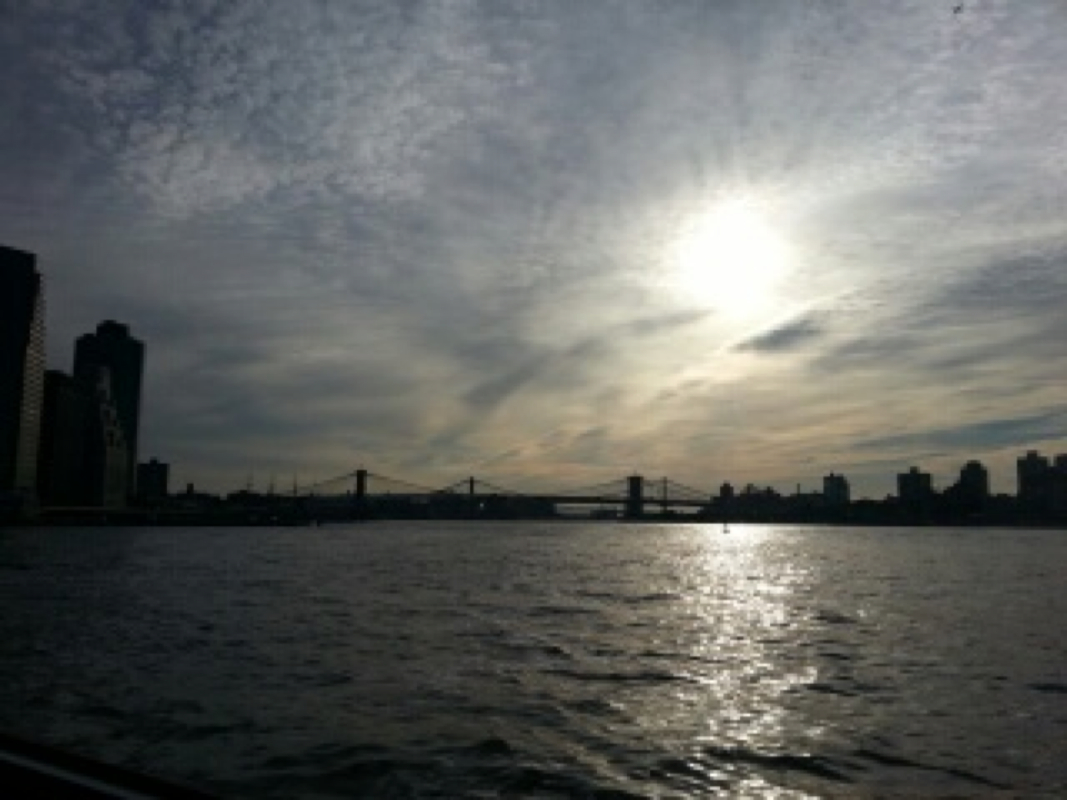
Brooklyn Bridge at 7am light. Nice.
It was an exhausting day yesterday at Materials for the Arts at Long Island City. I was so depleted after shopping for so much leather (a material I recently discovered I love working on while here in the US) I dropped off to sleep as early as 7pm. So now, I am awake at 3am and thinking of starting the day early at Governor's Island, even as early as the very first trip at 7am.
MFTA is a curious facility that makes sense to any artist working in New York. It is run by the city and is a place where donations of surplus, usable refuse and stuff you can pick off the curb are made available to artists as materials. Its a bricoleur's paradise. I have been here last April, but that was a harried affair because I was trying to catch the last ferry at BMB downtown, not aware that at 4pm, and with a car Manhattan from uptown to downtown is not actually ideal for motorists. (That is why 70% of New Yorkers dont drive.)
MFTA is an institution that can only fit in a culture where the modality of artmaking also comes from recycling and bricolage.And in a city where surplus, excess and post-consumption objects are as abundant as trees are in Southern Luzon, it is only natural for these to be an abundant source for creative projects and ideas. It really is about environment that which shapes the modality of making art - not theory. Bourriaud's postproduction theory is also a post-practice construct: I think artists have used that approach not because of an aesthetic in sight that runs through contemporary society like Hegel's ghosts, but more importantly, it is a strategic approach to creative engagement when one lives in the metropolis. In hindsight, I realize I work primarily in wood because that is the resource that was abundant when I was growing up in an Ilocos lumberyard and a furniture-making shop. I began to recall that I too, collected wood scraps and blocks and constructed them into my very first "sculptures". Wood is easy to assemble, because the material is homogenous, even across species of trees. It is this affinity with organic homogeneity that lies at the heart of my base experience and thus explain my preference for it, and why I cannot abide with heterogenous mixes of material.
But working in New York, and given the same limitations of access to craft-quality wood (costs are prohibitive!) I began to acquire the eye for alternative material. But its the curator in me that found pleasure in this, I have to admit. Yet also I began to think of the rebulto, my original point of departure: that too is a form of assembled materials. I forgot to consider that the latter examples of the rebultos are ultimately mannequins as they are dressed up and made up, incorporating glass, hair, fiber and metal. Not to mention the ephemeral materials used for decorating the altar and carozzas of yore. I remember my granduncle, the calesa-driver, using leftover steamed rice as an adhesive for paper decor on the spokes of the wooden wheel. And even that paper is cut from the "palara" wrapping from used cigarette packs. I look back at the whole practice and rediscovered a wealth of examples of recycling and repurposing, although most of what is used is organic, which is the most abundant. I postulate that if we had the materials like those at MFTA readily available, chances are Ilocanos would do the same with them.
This leads me to suppose that creative acts, prior to be subsumed under the artistic practice, begin with an engagement with objects that are invested with memory, feeling, sensations. I just acquired the habit - as most Filipinos do - the sentimental attachment to objects and the sense of token-making. (Think of all the clutter that my mother accrued in the house that I was growing up - she never disposed of anything that had some for of memory imbedded in them). There is really no need to speculate a kind of praxis here. Perhaps I can reach out into these tangible memories as well and use them to channel what lives on and what lingers.
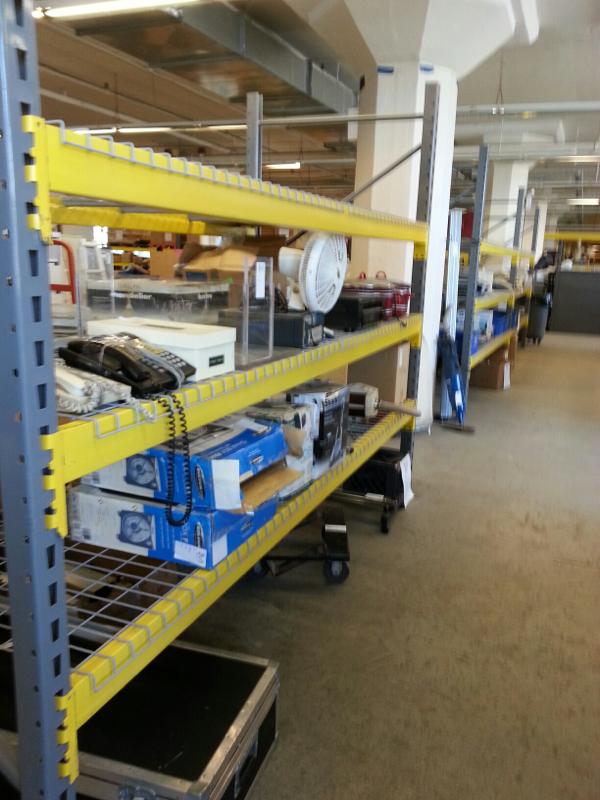
Materials for the Arts
The Calm Before the Storm
Propositions for regarding the work of Jeho Bitancor
Riel Hilario
(a)
It is often a practice, I daresay even a habit, of an accompanying text to an exhibition to be a sort of transliteration of the symbolic meaning of images. Thus, it performs as a key to understanding artworks, if not a peek into the creative mind and its sense of authorship; a genealogy tracing back to the artist. The presumption is that the text and the writer (and often the curator) is privy to the sanctum sanctorum of the creative process and thus can claim primacy to original and intended meanings. The public's readings are regarded as emanations or reactions to the text and image: mere convulsions.
That is not the case here as this brief collection of aphoristic paragraphs is nothing but a reaction to the work, one of the many convulsions, reactions, aftershocks and tremors that come at the wake of a viewing. Although I have known the artist for more than a decade now, I cannot claim that having access to the artist and his studio guarantees preferential knowledge.
An artwork remains potent not just because of its manifestation from the artist's endeavors but also even only after multiple framings, exposures and public regard, along with misconstructions and misunderstandings, dismissal and criticism.
(b)
We dispense with the presumption that this text is a sort of guide to looking at the works of Jeho Bitancor. I write from the role of a spectator, just like you, a mere bystander whose impressions add to the texture of the work.
---
(1)
The paintings of this series by Jeho Bitancor recall to mind the concept of "timpi", temperance in the face of adversity. It also feels like the deadly calm before a storm. You feel like something big, dramatic, disastrous is coming to the surface and the artist paints cross sections of this imminent catastrophe and aggression, exposing the dynamics of tension and trouble. Bitancor reminds me of the fiery San Vicente Ferrer, whose finger is raised upwards to heaven, trembling with the certainty that the judgment is coming, soon. But another hand is gestured, palm down, in an affectionate manner and intended to calm the fears of the just, and keeping the blood of the victimized from boiling unto retribution. There is pagtitimpi: not a call to arms but a call for calm introspection. A sense of urgency, however looms: we need to think and inspect in haste.
By evoking the word "timpi", we can also refer to the attitude of keeping tabs of all threats to our well-being, even as we refuse to respond to them rashly. "Hinahon" is a virtue that has emerged from our very core, and it applies well congruent to timpi. The by-product of hinahon and timpi, alas, is an aggregation of faults and missives, of pains kept under the strong-willed discipline of restraint. Bitancor may very well be painting these accretion of aches in his sense of surplus and maximalism. He sees to it that these things are in check, and sufficiently transparent (yet also veiled), so as to remind the public and its rulers that tension is rife, below the crust of our banal everyday spectacle-driven lives.
In his groundbreaking work "Pasyon and Revolution", writer Renaldo Ileto describes how the values articulated in the Pasyon, namely hinahon and dalamhati, tempered the revolutionary fervor and violence. The striking thesis here is that the early Philippine revolutionaries, through the language of the Pasyon, were able to articulate that their rebellion is due to a tipping point of "pagtitimpi". The Spanish colonial masters have become too cruel for any tolerance: hence the justification of revolution. During the Marcos period, the sense of this similar tipping point were articulated in the post-Aquino assassination with cries of "Sobra Na! Tama Na! Palitan na!"
Bitancor may very well echo the sentiments of this ebb and flow of revolutionary ferment and the precedence of accrued pains and injustice. His paintings express the imminence of yet another episode of singularity, charged with the tones of historic and epic narratives.
---
(2a)
We observe the artist has painted with a visual device that we can call superimposition. The main figurative images are either shown to be under layers of text, character, symbol, in alternating presences with an almost empty ground that serves as a visual base of reference. While this scheme conveys a frontal plane, like a picture window, Bitancor also uses a divided composition to present what is below and above. We see an attempt to use this visual scheme as a metaphor of "loob" and "labas", whereas the surface (or labas) is stripped of its pretensions with its viscera exposed. The artist, an avowed progressive advocate of social issues, criticizes social ills, class conflicts, subversion and subterfuge, and power positions through the means of this schema of "exposure". He cleaves the ideological skin and cuts through the marrow of the social disease. Thus we have images also, of diagnoses. Do not be fooled by appearances.
(2b)
The layers of superimposed elements forming a sense of transparency is a confrontational device, a pose for critique. Bitancor regards a theme as a structure, and his themes are handpicked from a series of observed injustices, inequalities, imbalances that are prevalent in his world, and even in his hometown. It is the viewer's challenge here to discern what these subjects are, for they are deliberately represented to be both veiled and obvious. Such is the game embedded in Bitancor's layers of paint.
---
(3)
Then there is the image of The Flood. Globalization (or its attendant symbols and presences) rush through the canvas like an inundation of surplus. We are overwhelmed by it, but like the boys who live along the esteros of the Pasig, we have learned to swim among the flotsam and jetsam. The water, although polluted, is still bouyant and that is what counts.
Water is painted, and is even suggested, and it seems some of the paintings even seem to convey being afloat. Filipinos know floods quite well, sadly enough. From the disastrous Ondoy flood of 2009 to the current inundations in Mindanao, we know the impact of being dislocated by forces greater than we can comprehend. Such is also the force of Global and transnational economies. Tons of surplus objects, rejects and used items (from jackets to luxury SUV's) make their way not just into our stores but also our consciousness. We have become consumers only. And we trade our labor elsewhere for the financial power to consume even more. We live in a time of great excess and Bitancor eloquently paints the floodwaters rushing.
---
(4)
"Filter" is a word Bitancor once used to refer to the critical examination of his iconography and his concerns as an artist. He is chiefly a painter but he has extended his oeuvre to performance art and its attendant processes. Not one to rush into inanities of expression, he is careful to the point of deliberateness in choosing what image he uses, how it is represented and what it represents and how it becomes an element to a visual discourse that contends social issues. The stream of images runs through a discursive sieve in his mind until these are discerned apt. Then he considers composition, with the same craft of certitude, until he has a work that has a unified statement, if not a comprehensive command for attention. His practice has been historically linked with Social Realism in Manila, although he states that as a provinciano from rural Aurora, he was only representing the social issues of his own hometown, as well as his reactions to the squalor of urban decay. Nevertheless his work remains forceful, always alert, ever vigilant: not a sense of frivolity or capriciousness. In essence, the artist strives for a clarity of message, while striving to find the contemporary images to frame them.
---
(5)
Tension exists in every figure and form:
Flowers versus thorns
Human versus machine
Organic versus metallic
Slave versus master (occluded)
Individual versus the System
Vernacular versus the Global
Red versus Green
Yellow versus Violet
Blue versus Orange
Squalor versus Splendor
---
(6)
Curiously while the themes Bitancor chooses to work with are within the context of Philippine society and its clash of squalor and splendor, the artist has painted these canvases in New Jersey, where he has been living for some years now with his family. It was as if he never really left home: the artist works like an overseas laborer who plies his trade elsewhere and then to remit his earnings back. But in his case the artist pursues his craft fulltime (a very difficult endeavor) in the US, amplifying his critical thinking, and transmits his insights through solo and group shows in Manila and in Singapore, on a regular basis. This is a testament to the artist's rootedness, as well as proof of how the Filipino always has home in his heart wherever he is.
Sent from my iPad
rebultomaker.weebly.com
riel.weebly.com
I call it "truth of the pavement", this habit of mine of trying to understand a place by walking its streets. By no simple effort does Manhattan reveal itself on a single promenade. I have never walked a city this big before; the mere fact that by standing in the middle of 3rd Avenue I cannot see both the north and south ends of the road always daunts me. But I have resolved to understand this city with my feet: bring on the pain.
Although I have been in the arts practice since I was 18, and have functioned in various roles in its world, I cannot but admit that I am now just beginning to understand my own creative processes. Each project, each artwork is a process of self-understanding, or even a manifestation, an aletheia of something that had hitherto been occluded from my own awareness. In effect each work comes to me as a surprise because Ive never had to anticipate the final structure of the work, nor draw its full form. I pay attention to the insights proffered and prompted to me as a result of a visual, emotional and even extra-sensory stimuli. And these stimuli I often discover in the act of exploring, traveling, and at the most basic level, by walking.
I now know that even with the most rational, most logical and most conceptually compelling project that I can conceive in my head, my creative process seems to take another path and like jazz, takes on a more improvisational manner. With the last Open Studios at LMCC Art Center, I had an insight to rearrange the whole installation a few hours before the start of the event simply because of an insight I received while aboard the Coursen ferry. Looking at the works that I have made during the past weeks, I discover that none of my planned works have ever materialized in full: the works finish themselves through a series of last-minute alterations.
It is as if the true author of my work, the artist behind the pieces, is a doppelgänger. In Ilocano, we call this a Kadkaduwa, literally the double soul that lives side-by-side in another dimension, as opposed to the Western Anima, that is the ghost in the shell.
Also, I even suspect that I am being led by this double, this kadkaduwa, to places that I have never been even remotely interested in. Its like I am being led by a headstrong dog on a walk in the park. It is only by a tug on the leash, my tempering of reason, that keeps me within the confines of the pavement.
Today I found myself looking for the White Horse Tavern in Greenwich Village and the parade grounds of Washington Square Park. I know for a fact that Dylan Thomas had collapsed (and died shortly) after a drinking binge at the Tavern in 1953. It was this that drew me there, this scent of a passing. At Washington Square, the stately old trees were once used to hang people in the 1700's. I sought solace there, in what appears to be a streak of morose mood swings. Yesterday I sniffed out the place where John Lennon was shot at the Dakota. Then walking along Bleecker, Christopher and Washington Place streets, I espied the historic buildings and noted how residual memories and presences are impressed on the faded details of architectural decor. It seems that my dog of a doppelgänger has led me on a ghost hunting tour, and the truth of the pavement may very well be espying haunts in the brownstones.
Can I hypothesize that my creative practice is a form of mediumship? I work to discover further, as I do feel sometimes that I am never alone.
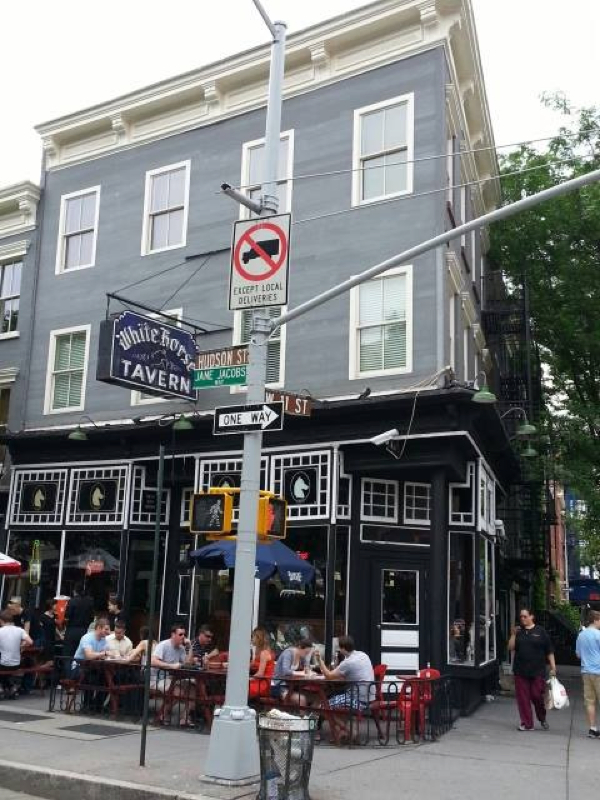
White Horse Tavern. Where Dylan Thomas drank his last whiskey.
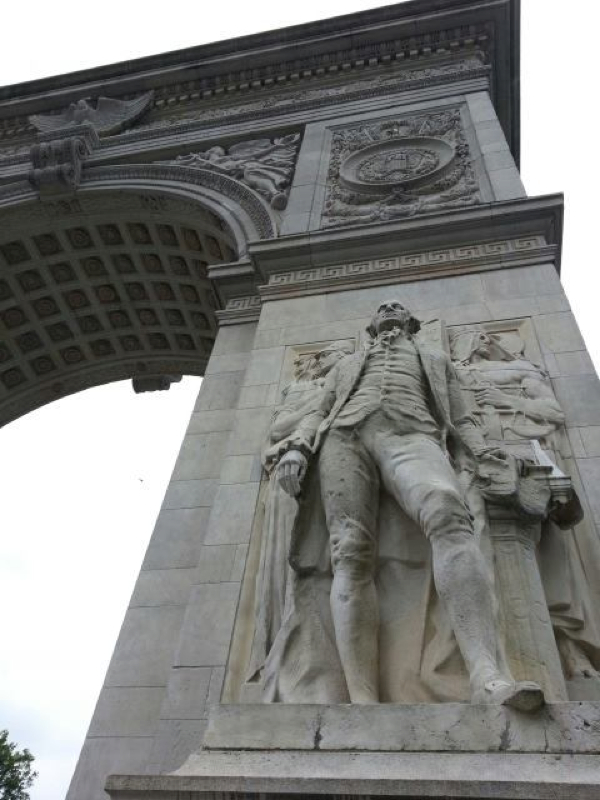
Washinton Square Park Arch. Marcel Duchamp once broke into this structure and declared Greenwich Village as an independent republic for and of bohemians.
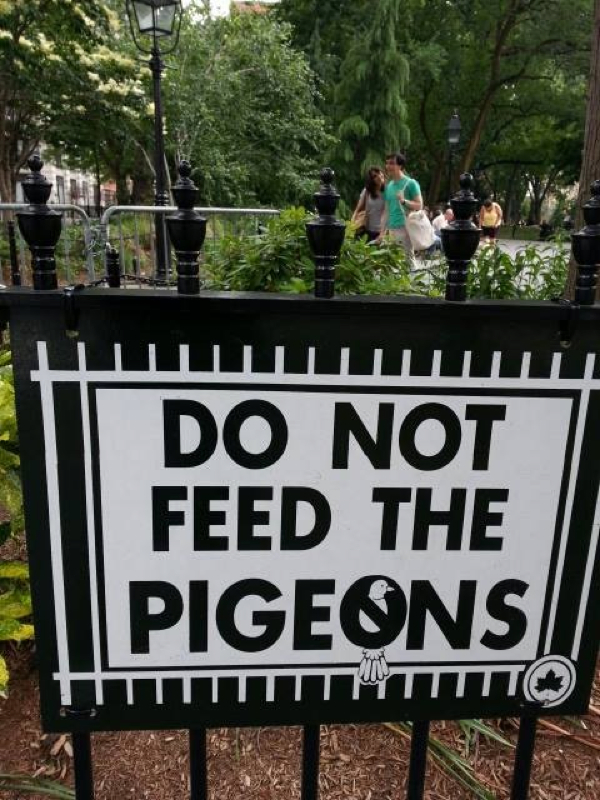
Signage at Washington Square Park
I woke up today with the blues. I have been working straight two weeks since the exhibition at Bliss (last June 1st) and have not stopped until today. Thus I gave myself a mental cleaning and took a walk on a nice summer afternoon in the Upper Westside and in Roosevelt Avenue in Queens. I lingered over Strawberry Fields and stared at The Dakota and thought of John Lennon who was shot near the spot where I stood. Quite weird: all the subway singers were singing Beatles songs today, including a man on the 7 Train from Queens who sang "Yesterday" from Queensboro Plaza to Vernon Avenue. So: John Lennon is haunting me. (So I downloaded a Best of the Beatles album from Amazon's Cloud Player).
Also gave me an opportunity to draw freely while on the subway, which I have been doing since I arrived here. I was so interested on how the subway movement intervenes with my rendering of objects and people that are within my immediate environs. I shall call these collection of sketchbooks "Train of Thought".
Although I did take a break several times to clear my head, like the visit to the Open Studio event at NARS in Brooklyn where there was a preview of works and artists talks by Taiyo Kimura and Takeshi Ikeda (with the special participation of Kong Vollak), ACC grantees all. I found Taiyo's and Takeshi's works very engaging in their sense of humor. It was a very refreshing feeling considering that contemporary art pieces often seem sullen and catastrophic. It seems like everyone here is obsessed with an impeding zombie apocalypse of some sort - a changeover from infatuation with vampires and werewolves. Taiyo's concern with exploring social psychology provoked me to think of the public as well. In the solipsistic world of personal dreams where my work often lies, the gap between the work and the public is problematic.
Then there was Figment, a "participatory art" festival held last weekend at Governor's Island. I went there on a Sunday because the rains kept Saturday a bit apprehensive. Despite the hordes of people (not comfortable with crowds) that came in by boatloads to the Island I was able to thoroughly enjoy the event. Most of the works on site were a bit corny, some really badly constructed. What stood out for me was this fascinating construction called "Head in the Clouds", a large sculpture made out of recycled plastic milk containers, set on the open grounds of the island, near Fort Jay. More impressive was the fact that a DJ was playing some house music inside the structure. Gave me the impression of a beehive. The mini-golf works were charming, as children and some adults did try them out - despite there were more obstacles than range.
The rain has proven to be quite the obstacle for me these past two weeks. Manhattan does not look well under a storm cloud, as does the ferry ride to and fro Governor's Island. So most of my work is continued in my apartment in Midtown, especially detail work that does not involve mallet strikes. Also, I finally got weary of the tedious commute and the difficulty of stopping work before 6pm, the time when the Island closes to the public, and the ferry ceases to operate. I learned to take my work back to the apartment everyday, lugging almost 20 pounds of wood and tools each way. But when Sandra, in a meeting with other ACC grantees, explained that this was really how New York based artists work - because they live far from their studios (rent issue) - I learned to understand, almost viscerally and physically, what artmaking means in this environment.
The sheer physical, financial and mental stress can make any artist living in the Bronx and working in studios in far Brooklyn reconsider making art that is object and craft-based. One of the artists at LMCC, Ethiopia-born Ezra Wube who lives in Brooklyn, told me of how he got rid of all his paintings that cluttered his living space and settled with a single canvas which he paints over and over again, taking still shots frame by frame and producing short animation videos from the progression of the work, which he projects onto the blanked-out canvas during an exhibition. During the Open Studios last May he showed me a flash drive where his work, he says, is all stored. That was an ingenious, remarkable and quite apt strategy for environments like New York, or other megapolises. I ask: why is this modality of creative processes then taken up by bourgeois artists in Manila and shown in white-box galleries and framed by essays peppered by quotes from Rosalind Kraus? Even as concept-, process- and project-based art are creative solutions used by the marginalized here versus the instituted notions of high art, why is that these are presented as objects of bourgeois consumption back home? My theory of traffic of novelty applies here: where a brick from New York, once transported to Manila, becomes regarded as an artifact of civilization. We are really far away from the Capital...but artists in Manila are not as impoverished as they claim...
Indeed what I can consider as a discovered gem of experience during the past three months of this residency is this: a sense of unburdening.
In the Philippine vernacular the colloquialism "bagahe" (or simply mental baggage) for artists is the sense of insecurity and an attendant sense of unreality that accompanies creative practice that is a) pontificated by institutions and a learned class and b) evangelized by textbooks, second-hand art magazines (often ten years old), and borrowed art books often Taschen publications that have little discourse and more plates and c) sustained by cheap China-made art supplies. In other words, art is something that is so conceptually intangible, as lofty as a Biblical parable and as complex as election politics: a very muddy yet cinematic paradise.
I came to Paris and New York, unknowingly carrying the weight of this insecurity. And eventually by living among peers and other artists - and also coming to witness the original works that I studied only from badly-developed slides and reproductions -I came to understand the ground truth of practice: often the frames are far too large for the art itself. To take off the baggage I had to dismantle the frames, the theories, the books, the words and the politics so I can face the work with a clear mind. So I can confront the work, naked eye gazing at a naked construct. In Buddhism the call this prajna, or the practice of non-attached awareness.
I am partial to experiential knowledge: I defer truth until I have come close enough to smell information. New York, Manhattan, Contemporary Art - these are no longer concepts for me. They have texture, they have weight and they have different scents to them now.
And so, I am learning to unpack the bags, and hopefully by the end of next month when I conclude my stay here, I can just leave these - like any New Yorker - on the curb with all the trash. Fit for dogs to piss and mark their spots.
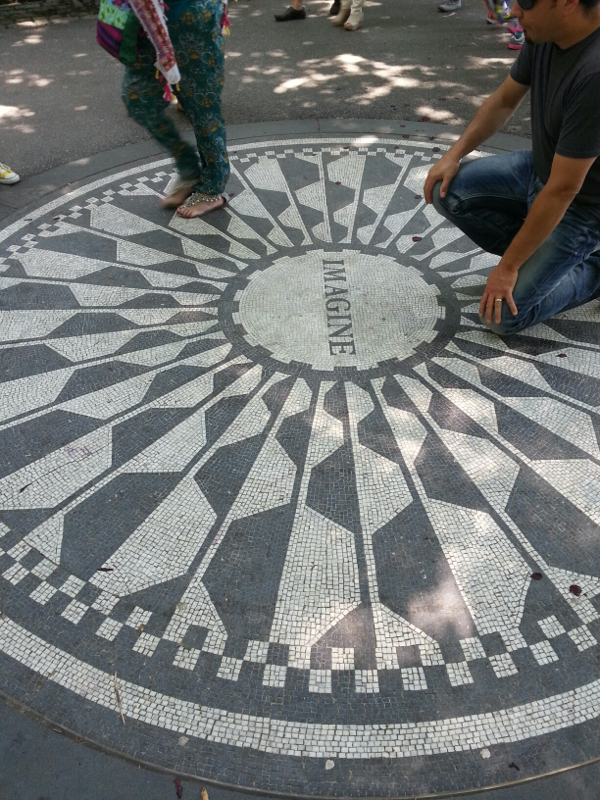
Strawberry Fields, a memorial to John Lennon at West Central Park
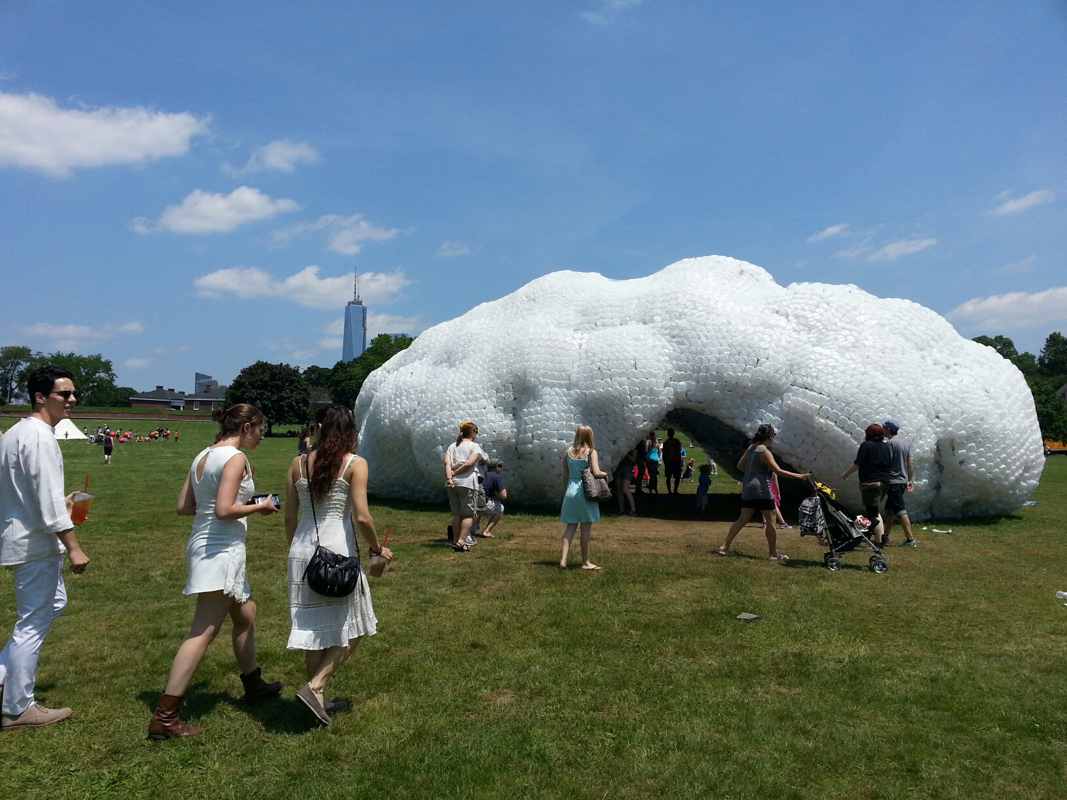
Head in the Clouds. Made of recycled milk bottles. Figment Art Festival, June 9, 2013, Governor's Isalnd.
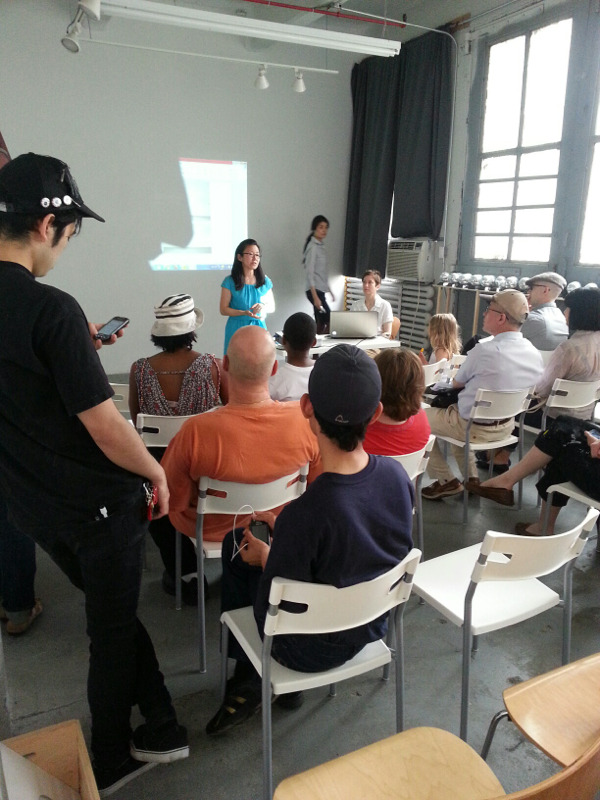
NARS Open Studios: Artist Talk
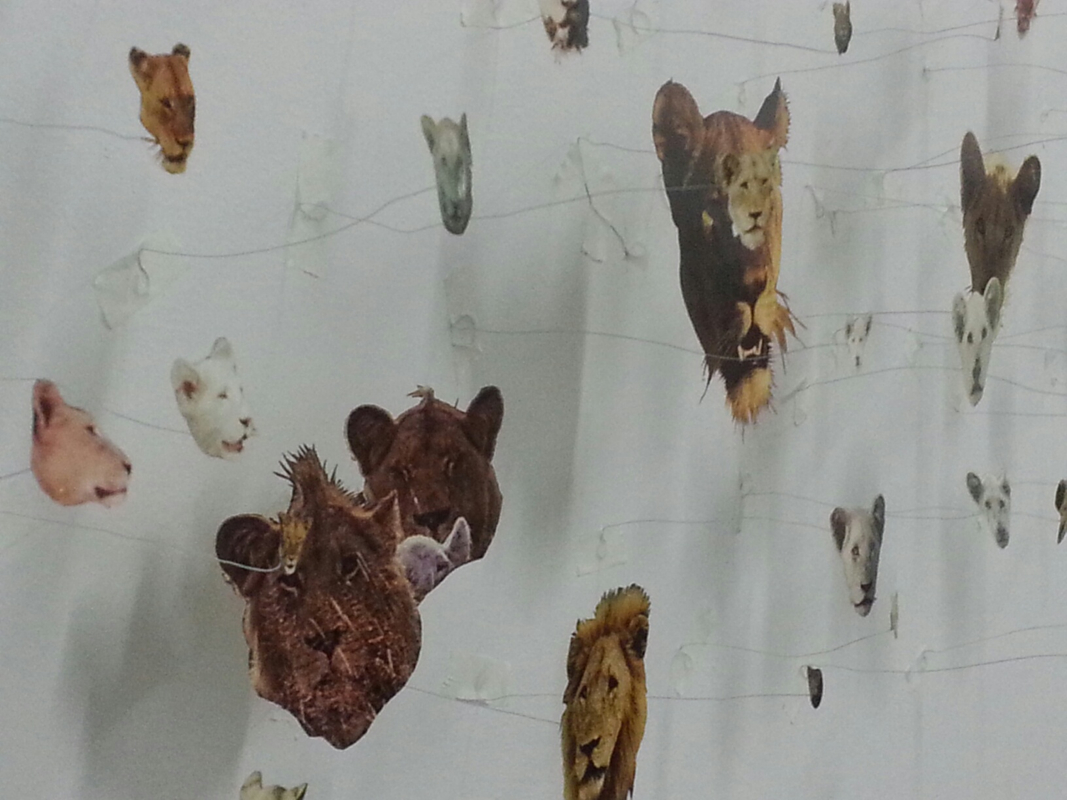
Taiyo Kimura's works at his studio at NARS, Brooklyn
|
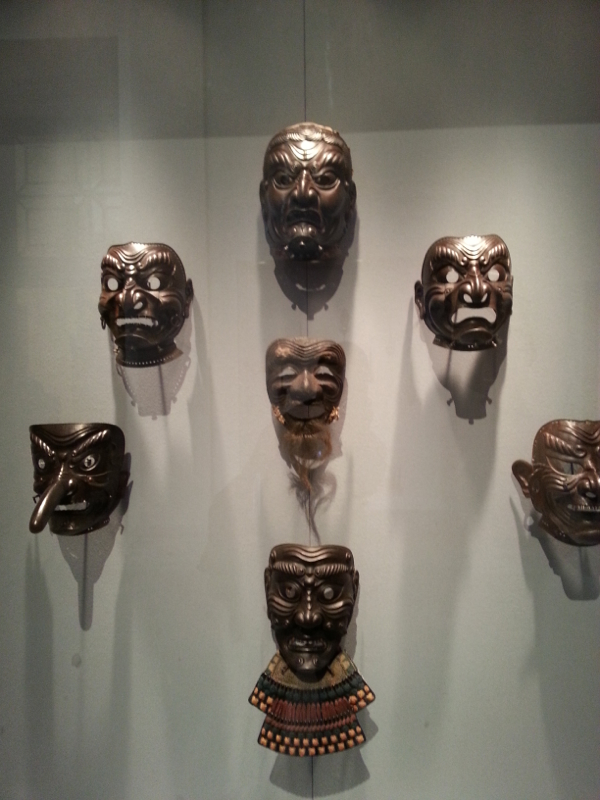


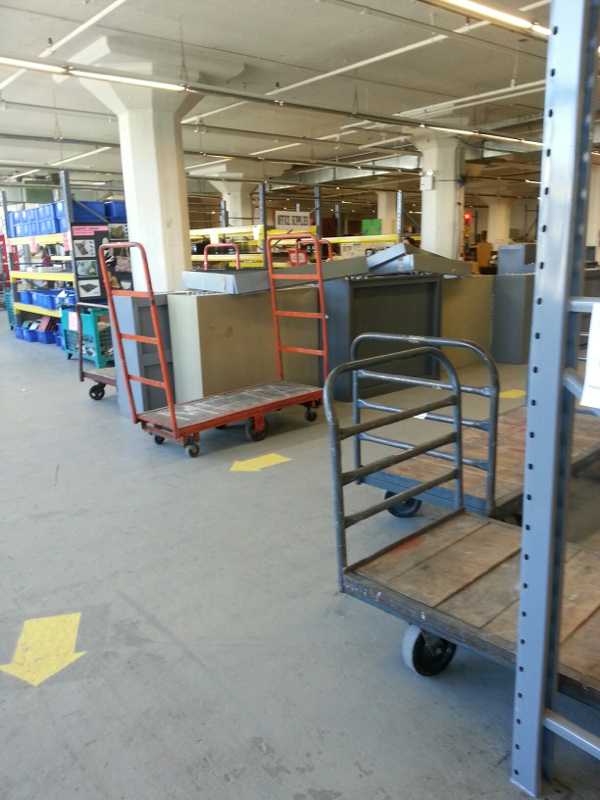







 RSS Feed
RSS Feed